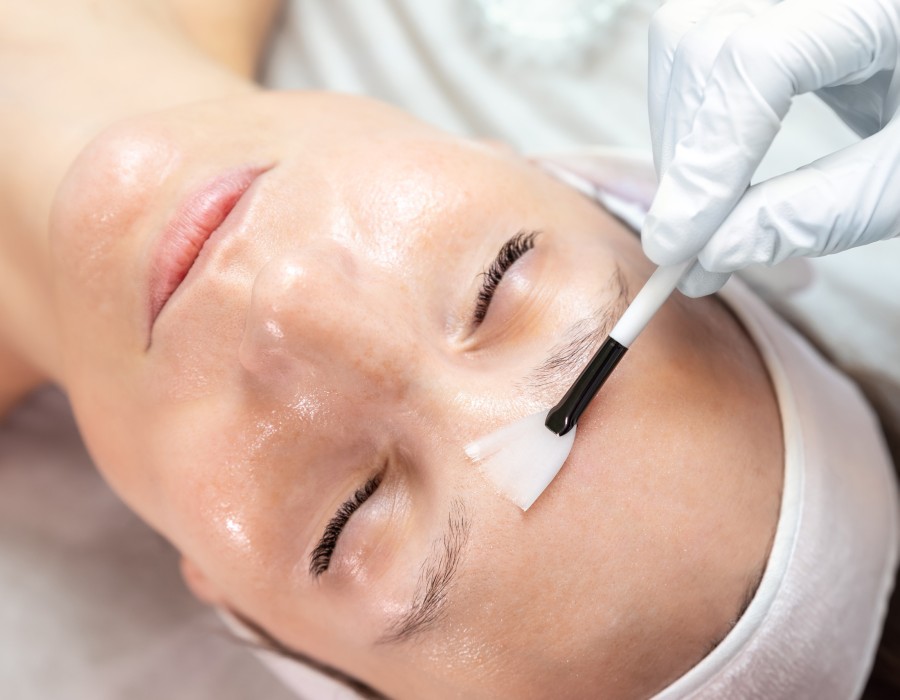Hyperpigmentation — those dark patches or uneven spots that make the skin appear dull — is a common concern for many people. It can be caused by sun exposure, acne scars, hormonal changes, or even inflammation. Finding an effective solution that delivers noticeable results without invasive methods is often a top priority. One treatment that has proven to be both safe and effective is Chemical Peels in Dubai, a popular cosmetic procedure known for its ability to fade dark spots, even out skin tone, and bring back a natural glow.
Understanding Hyperpigmentation
Hyperpigmentation occurs when the skin produces excess melanin, the pigment responsible for giving skin its color. This overproduction can happen due to several reasons: prolonged sun exposure, hormonal fluctuations (such as during pregnancy), inflammation caused by acne, or certain skin injuries.
These dark patches can appear anywhere on the face or body and may vary in size and intensity. While they are generally harmless, many people seek treatments to restore an even complexion and improve their overall appearance.
How Chemical Peels Work on Pigmented Skin
A chemical peel involves applying a controlled solution of exfoliating agents to the skin’s surface. This solution removes the outermost layer of dead or damaged skin cells, stimulating cell renewal and promoting the growth of fresh, evenly toned skin.
For hyperpigmentation, chemical peels target the areas with excess melanin, helping to lift and fade dark patches. As the skin regenerates, the pigmentation gradually lightens, and the complexion becomes brighter and more uniform.
The depth of the peel — superficial, medium, or deep — determines how much pigmentation it can address. Light to medium peels are typically used for most pigmentation concerns, providing gradual and safe improvement over multiple sessions.
Types of Chemical Peels Used for Hyperpigmentation
Not all chemical peels are the same. Each type of peel has its own unique formulation and benefits depending on the severity of the pigmentation and the skin type.
Glycolic Acid Peels
These are among the most popular peels for treating pigmentation. Glycolic acid helps exfoliate the top layer of the skin and promote cell turnover, revealing a more even skin tone.
Lactic Acid Peels
A gentle option ideal for sensitive skin. Lactic acid peels hydrate the skin while lightening mild pigmentation, giving a radiant glow without irritation.
Salicylic Acid Peels
Best suited for oily or acne-prone skin, these peels help reduce post-inflammatory pigmentation caused by acne breakouts.
TCA (Trichloroacetic Acid) Peels
Medium-depth peels that can address deeper pigmentation issues such as melasma or sun damage. These peels penetrate further into the skin for more visible and lasting results.
Why Chemical Peels Are Effective for Hyperpigmentation
Chemical peels not only exfoliate the surface but also work at a cellular level to balance melanin production. By encouraging new cell growth, they help to fade existing pigmentation and prevent future discoloration.
They also improve blood circulation and stimulate collagen production, which results in smoother, healthier-looking skin overall. When performed by trained professionals, chemical peels can significantly reduce the appearance of uneven tone without damaging the surrounding skin.
Safe for Most Skin Types
Thanks to advancements in dermatological care, chemical peels can now be customized for almost every skin type, including darker complexions that were once considered at risk for post-inflammatory pigmentation.
Professionals in Dubai carefully assess your skin tone and sensitivity before selecting the right type and strength of peel. This ensures a safe and controlled treatment with optimal results. Light peels, for example, are perfect for beginners or those with delicate skin, while medium-depth peels are ideal for more stubborn pigmentation issues.
What to Expect During Treatment
The process of a chemical peel is simple and quick. The skin is first cleansed to remove impurities, then the chemical solution is applied for a few minutes. You may feel a mild tingling or warmth as the solution begins to work. The peel is then neutralized or removed, followed by the application of soothing products to calm the skin.
After treatment, mild redness or flaking may occur as your skin begins to shed old cells. This is a natural part of the healing process, and within a few days, you’ll notice clearer, more even-toned skin.
Aftercare for Best Results
Proper post-treatment care is crucial to maintaining results and avoiding complications. Here are a few essential steps:
- Avoid direct sun exposure and always wear sunscreen with SPF 30 or higher.
- Keep your skin hydrated using gentle, non-irritating moisturizers.
- Do not peel or pick at flaking skin — let it shed naturally.
- Follow professional advice and avoid strong skincare acids or exfoliants for a few days.
Consistency is key. A series of chemical peel sessions, spaced a few weeks apart, often delivers the most noticeable and lasting improvements.
The Added Benefits of Chemical Peels
Beyond treating pigmentation, chemical peels also provide several other skincare benefits:
- Smoother and softer skin texture.
- Reduced acne and breakouts.
- Brighter and healthier-looking complexion.
- Enhanced effectiveness of skincare products.
This makes them an excellent all-around treatment for maintaining youthful, glowing skin.
Conclusion
If you’re struggling with dark patches, sun damage, or uneven tone, Chemical Peels Dubai offers a proven and professional approach to achieving clear, radiant skin. By targeting excess melanin and promoting cell renewal, chemical peels effectively treat hyperpigmentation while revitalizing the skin from within. With expert guidance and proper aftercare, you can enjoy a more balanced, luminous complexion that reflects confidence, health, and natural beauty — a true reflection of Dubai’s advanced skincare standards.






Comments